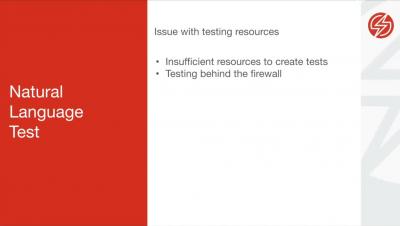Systems | Development | Analytics | API | Testing
Low Code
2021 Appian Public Sector Solutions Cup
3 Tips to Streamline Claims Operations for a Connected Insurance Experience
Insurtech funding hit a record high of $7.4 billion in the first half of 2021—already surpassing funding in 2020. With more and more emerging players entering the field, consumer demands for a more digital, connected insurance experience have grown to new heights. For many insurance customers, the claims process is a critical moment of truth, making it essential that insurers deliver a hassle-free, seamless experience.
Low-Code Automated Web Testing Offered by Sauce Labs
Using Low-Code to Solve the 3 Biggest Challenges of State and Local Government
State and local government agencies in the US are facing heightened demand to address a long-avoided issue: outdated technology. The existing solutions these government organizations rely on are not user friendly, limit collaboration by siloing essential data, and make processes longer and more cumbersome than they need to be. Yet, despite the limitations that result from outdated solutions, it should come as no surprise that only 60% of states have a digital strategy.
Antalis Go Live with Appian
Accelerating New COP26 Initiatives with Low-Code
Many key initiatives were announced at last week’s 26th UN Climate Change Conference of the Parties (COP26) in Glasgow to encourage phasing out coal for electricity generation.
How To Fight Document Overload with Low-Code and IDP
In a Harvard Business Review article, Thomas C. Redman references a project by AT&T, the world’s largest telecommunications company, where the simple task of reducing invoicing errors uncovered something shocking: over 40% of invoicing data contained errors that cost the company tens of millions of dollars. Even in 2021—the age of digitalization—poor quality data is wreaking havoc in businesses, costing the United States a staggering $3 trillion per year.
Now is the Time to Enter the Low-Code Economy
Low-Code. This is a new term for many, and it raises questions. The first is “What is it?” Suffice to say, low-code is a new way to build software applications that is faster and better than traditional coding. A more urgent question is “why do we need it?” What kinds of shifts has the world seen that have caused something like low-code to gain prominence? We need to take a few steps back to understand how business and the tech industry have evolved.
5 Features that Save Developers Time in the Appian 21.4 Release
Did you know it takes an average of six months to build and deploy a basic enterprise app? It’s time to get our hours back. Low-code platforms like Appian cut that dev time in half or more. Design your apps securely and quickly using visual workflows so you can spend your time coding creative custom features instead of working on non-value adding, monotonous development tasks.






